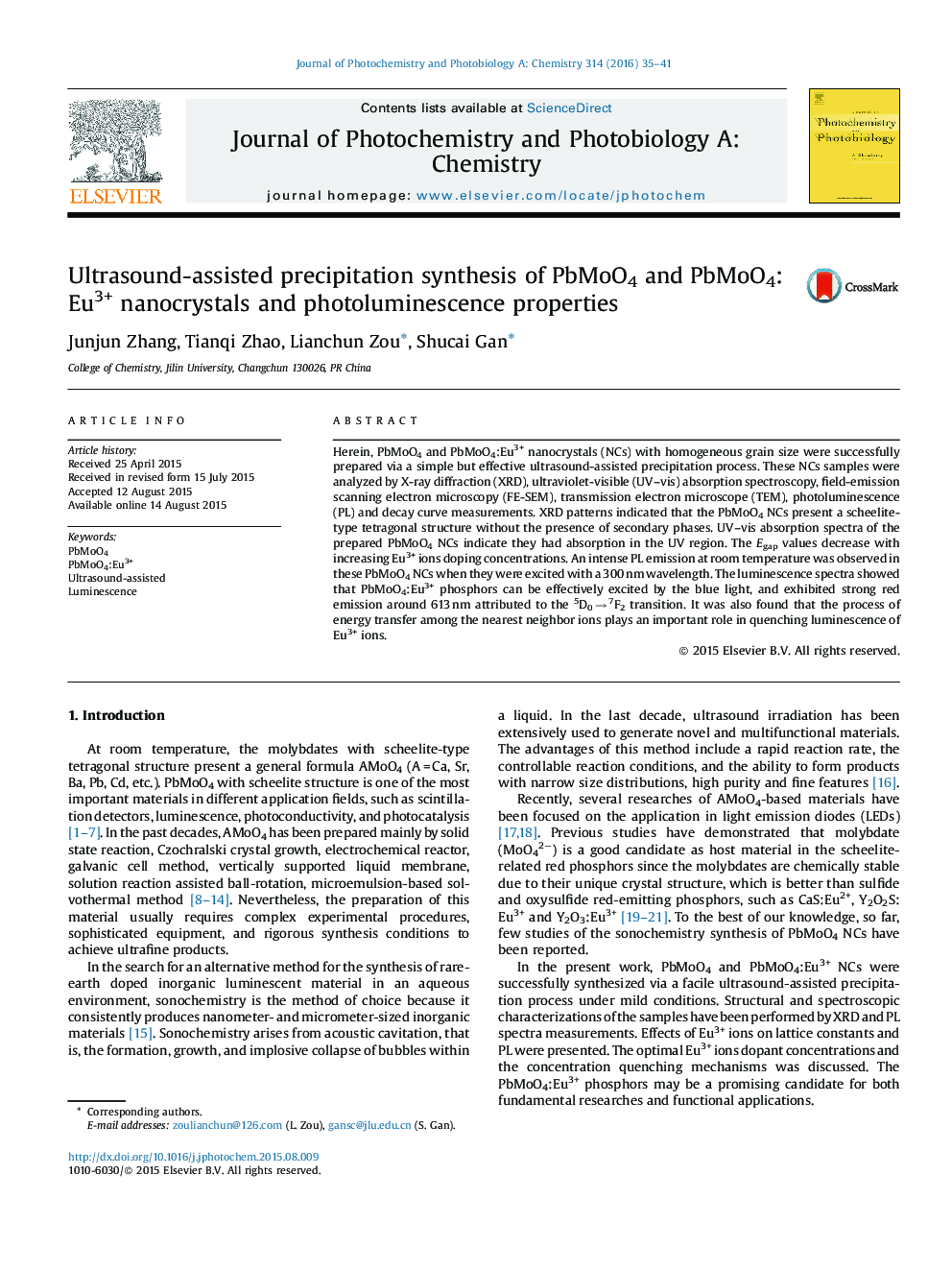| Article ID | Journal | Published Year | Pages | File Type |
|---|---|---|---|---|
| 26363 | Journal of Photochemistry and Photobiology A: Chemistry | 2016 | 7 Pages |
•PbMoO4:Eu3+ phosphors were produced via ultrasound-assisted precipitation route.•Bright red light could be observed from PbMoO4:Eu3+ under the excitation line at 466 nm.•The Egap values decrease with increasing Eu3+ ions doping concentrations.
Herein, PbMoO4 and PbMoO4:Eu3+ nanocrystals (NCs) with homogeneous grain size were successfully prepared via a simple but effective ultrasound-assisted precipitation process. These NCs samples were analyzed by X-ray diffraction (XRD), ultraviolet-visible (UV–vis) absorption spectroscopy, field-emission scanning electron microscopy (FE-SEM), transmission electron microscope (TEM), photoluminescence (PL) and decay curve measurements. XRD patterns indicated that the PbMoO4 NCs present a scheelite-type tetragonal structure without the presence of secondary phases. UV–vis absorption spectra of the prepared PbMoO4 NCs indicate they had absorption in the UV region. The Egap values decrease with increasing Eu3+ ions doping concentrations. An intense PL emission at room temperature was observed in these PbMoO4 NCs when they were excited with a 300 nm wavelength. The luminescence spectra showed that PbMoO4:Eu3+ phosphors can be effectively excited by the blue light, and exhibited strong red emission around 613 nm attributed to the 5D0 → 7F2 transition. It was also found that the process of energy transfer among the nearest neighbor ions plays an important role in quenching luminescence of Eu3+ ions.
Graphical abstractPbMoO4 and PbMoO4:Eu3+ NCs were successfully synthesized via a facile ultrasound-assisted precipitation method. The luminescence spectra showed that PbMoO4:Eu3+ phosphors can be effectively excited by the blue light.Figure optionsDownload full-size imageDownload as PowerPoint slide
